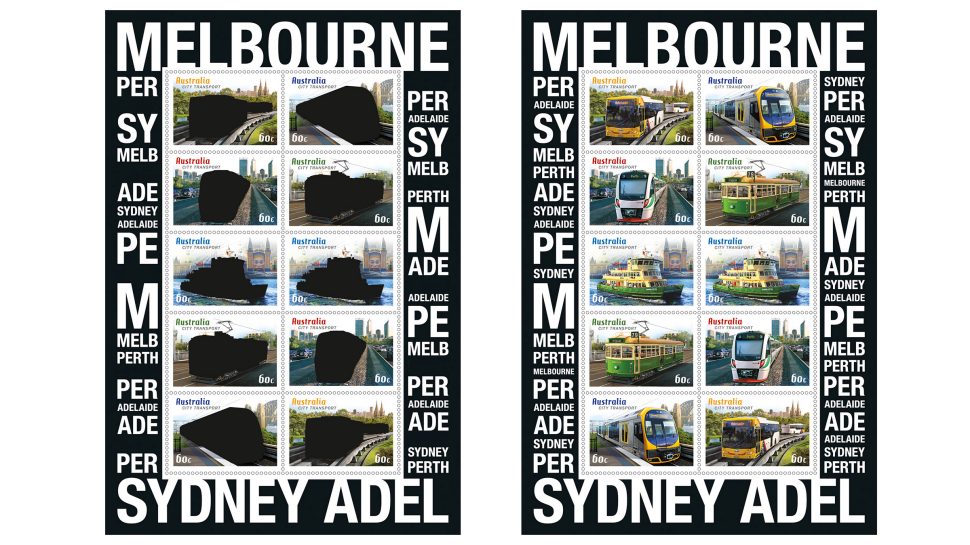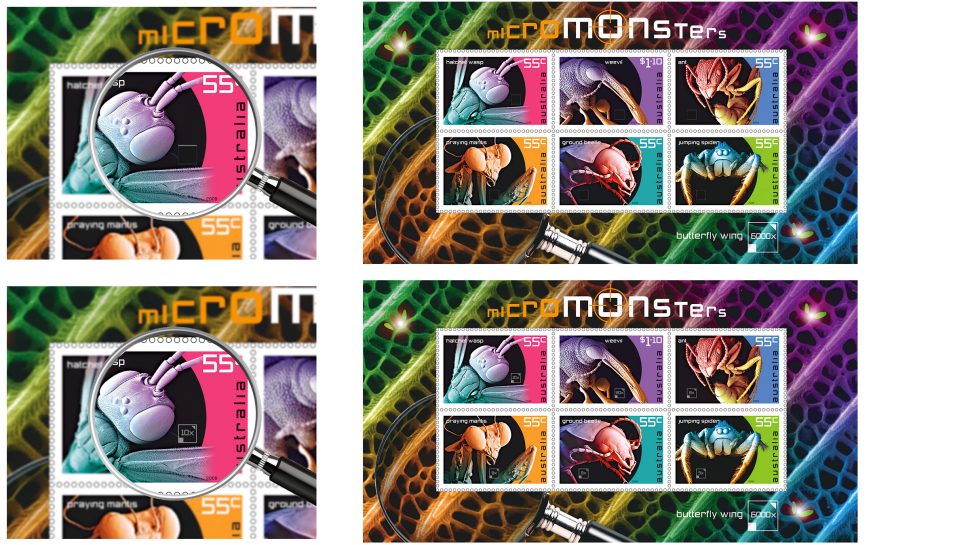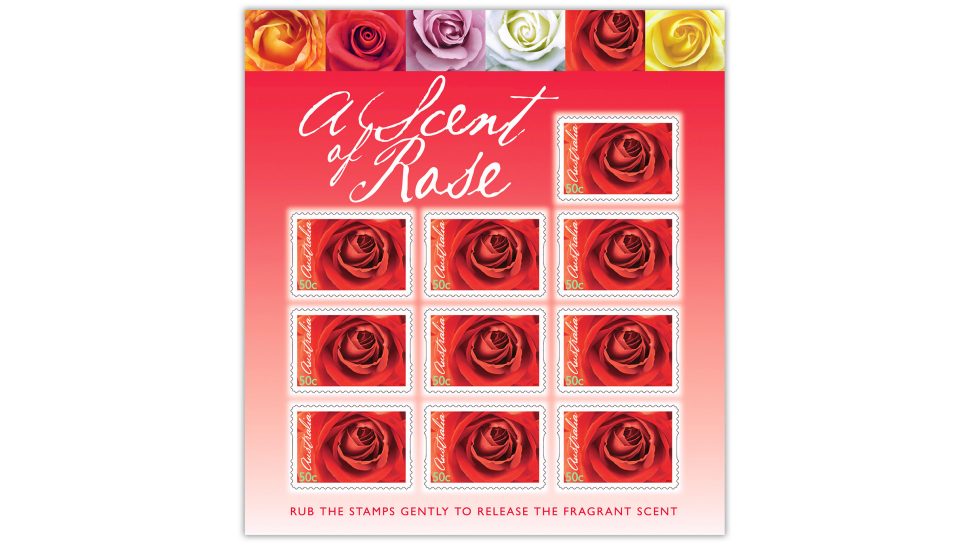Over the past two decades, Australia Post has produced various ‘novelty’ stamps, which have pushed the envelope (no pun intended) in terms of printing techniques, and provided enjoyment and amusement to stamp users and stamp collectors alike.
In this two-part series, we take a look back at some of the stamp issues that are a bit outside the square (and rectangle!)
“Rub to reveal” stamps
“Rub to reveal” stamps, as their name suggests, allow a person to rub an area of the stamp to reveal an image underneath, with the image reverting back to its original state again. These stamps use a printing technique, known as thermoprinting, so named because of the use of heat-reactive inks to achieve the desired effect.
The “Rub to reveal” sheetlet stamp pack in the 2012 Capital City Transport stamp issue used heat reactive black ink on one of the two included sheetlets. By rubbing gently on the affected stamps, images within the stamp designs were revealed.
The sheetlet was printed using conventional offset inks. Then a black obliterating thermochromic was applied, in a separate screen printing process, to block out images within the stamp designs. It is a water-based ink that dries by oxidisation. The ink must be UV cured which when printed is totally transparent due to heat generated by the UV.
The effect is 100% reversible; as the affected area begins to cool it reverts back to black. The temperature that activates this effect can be altered or custom manufactured, but in this case the temperature was set at approximately 25°C, to allow body heat or friction to initiate the reaction.
The thermoprinting technique was previously used to reveal the magnification of each of the creatures featured in the Micro Monsters stamp issue released in 2009. This was the first time that thermoprinting technology was incorporated into an Australia Post philatelic product.
A special area (indicated by a small square) in the black background of each stamp on the minisheet could be rubbed to reveal information about the degree of magnification of each insect, as it appeared in the stamp design.
The stunningly complex microstructure of a Common Cabbage White Butterfly’s wing was also magnified 6,000 times its original size, in the background of the minisheet.
Scented stamps
In 2000, Australia Post produced its first scented philatelic product. The Gardens stamp issue (consisting of five 45c stamps) contained a “scratch and sniff” area in the self-adhesive booklet, which smelled of freshly mown grass.
Then in 2006, things got even sweeter with the release of the scented rose stamp for Valentine’s Day. The Roses stamp issue included a classic red rose design. The red rose design in the sheetlet of 10 (aptly named “Scent of a Rose”) gave off a sweet rose scent, when scratched.
The scent was specifically designed by Flint Ink, and Australia Post conducted considerable research to ensure that the scent really did resemble a rose and was durable.
The scent is made of a non-toxic oil base and is encapsulated. This means that there are millions of microscopic bubbles sitting on top of the printed rose image. Light rubbing breaks open the microscopic bubbles, to release the scent. The full scent is released over several rubs and should last a very long time (some collectors may still be able to smell the scent today).
The “scratch and sniff” Roses stamp was printed by Pemara Labels, using a flexographic printing process. While the Gardens stamp issue in 2000 also featured the “scratch and sniff” component, the Roses stamp was the first time it had been incorporated onto the stamp itself.
In 2001, the Farming Australia – Native Plants scented sheetlet pack was released. It featured a Eucalyptus scent (from Bosisto’s eucalyptus oil) using the (then) latest in printing technology, Rub’N’Smell® scented varnish. This product is said to have a stronger shelf life than the “scratch and sniff” alternative (due to the small size of the fragrance microcapsules contained within the varnish).
During the printing process, scented microcapsules are applied as a patch, as a sheet-fed offset overprint, as opposed to the flexographic process used in previous “scratch and sniff” style stamps. This makes it easier to add the scent, because it means that the scented varnish is applied just like an additional print colour or spot coating.
In the next post in this series, we’ll explore some interesting shapes and textures featured in Australia Post stamps.
This article was produced at the time of publication and will not be updated.





